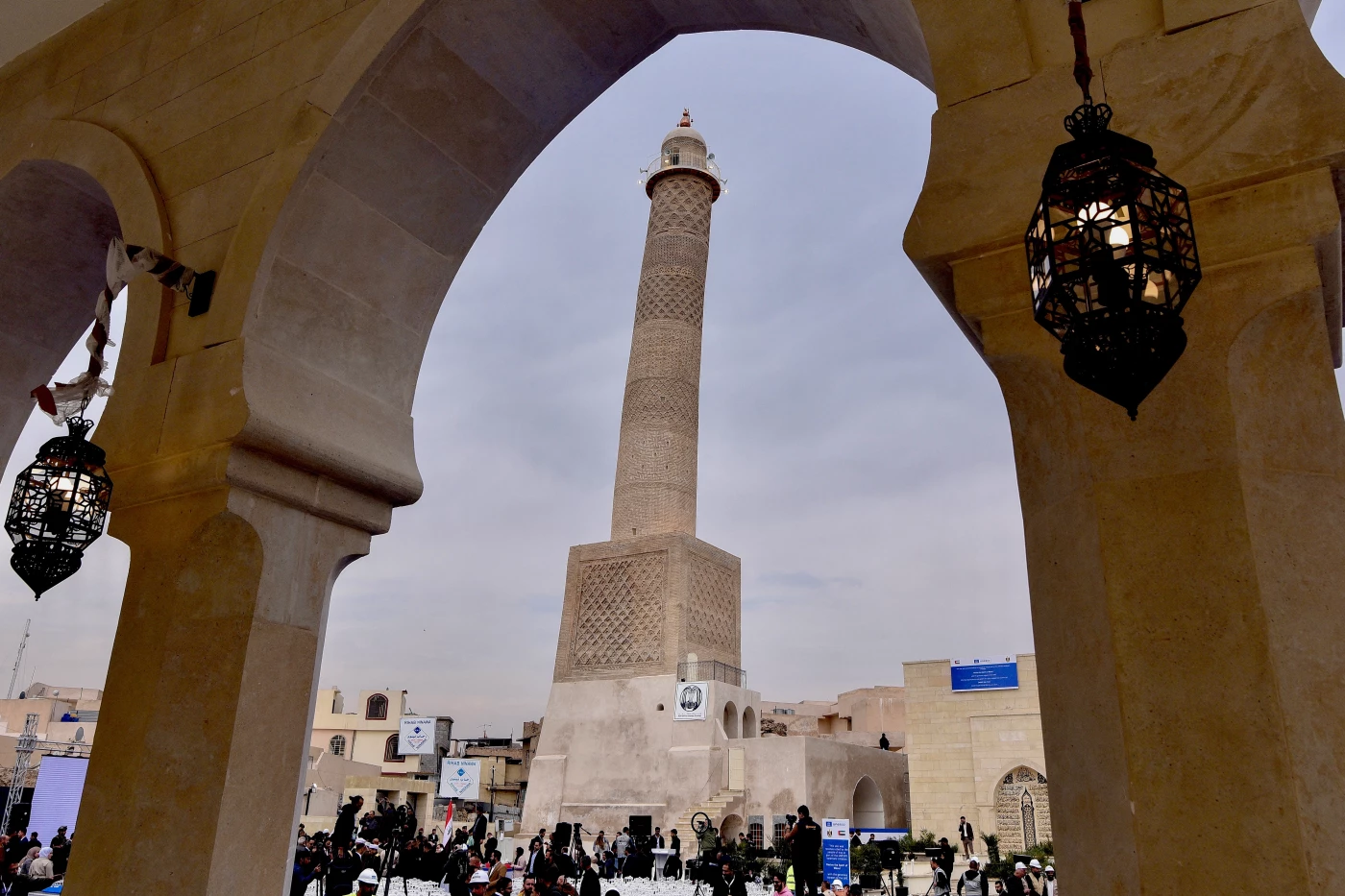ERBIL, Kurdistan Region of Iraq – Mosul’s famous leaning Al-Hadba minaret has been restored using its original brickwork, nearly eight years after it was reduced to rubble by the Islamic State (ISIS) in 2017.
The Al-Hadba minaret today is an exact replica of the old one, "built with the same bricks,” said Abdullah Mahmoud of the Iraqi department of antiquities. "Al-Hadba is our identity, and by restoring it, the identity of the city has been reclaimed."
The minaret, which is part of the historic Al-Nuri mosque, stood upright for over 800 years since its construction in the 12th century, until it eventually met its destruction following Mosul’s capture by ISIS in 2017.
During their three-year-long rule across parts of northern and western Sunni regions of Iraq, ISIS ”systematically" destroyed over 100 cultural heritage sites and religious shrines, according to a report published by UNITAD on September 2024, prior to its closure.
The minaret and mosque are the latest landmarks in Mosul to be restored with the help of United Nations heritage body UNESCO.
"I am very happy to stand before you and before the minaret over 850 years old... and the fact to have it here behind me in front of you is like history coming back... is like the identity of the city coming back," the director-general of UNESCO Audrey Azoulay said.
The minaret’s tilt, a hallmark of the iconic site, has been retained at 1.6 meters, similar to the 1960s, however, the foundation has been reinforced, rendering it sturdier and no longer leaning as precariously as before.
Mosul's iconic leaning minaret has been restored by using its original brickwork, eight years after it was destroyed by ISIS pic.twitter.com/qRkxtKckG2
— The New Region (@thenewregion) February 5, 2025
"The minaret's body from the inside needed 96,000 new bricks," Mahmoud said, adding however, that 26,000 of its original bricks were used for the exterior to preserve its historical legacy.
A cast majority of Mosul’s infrastructure was destroyed in the fight against ISIS.
Their ultimate defeat breathed life back into Mosul, but the city still bears the struggles of the dark patch it endured.
"We opened the window once and saw the black IS flag on top of the minaret. Then we opened it again and the minaret was gone," said Saad Mohammed, 65. "Today the minaret has risen again, alongside the mosque and the churches. Now we feel safe.”
Over 12,000 tons of rubble were removed for the restoration project, which included multiple other sites.
Six years into the declaration of ISIS’ territorial defeat, the group remains a security threat in Iraq through its remnants.



 Facebook
Facebook
 LinkedIn
LinkedIn
 Telegram
Telegram
 X
X


